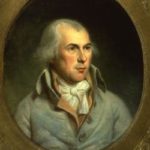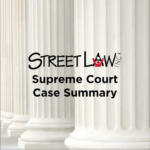The First Amendment has two clauses related to religion: one preventing the government establishment of religion (the establishment clause) and the other protecting the ability to freely exercise religious beliefs (the free exercise clause). Students examine the First Amendment’s Establishment Clause: why it was included in the Bill of Rights, the issues it addresses, and how the Supreme Court has interpreted it over time.
The Pursuit of Justice
The Pursuit of Justice book, written by Kermit L. Hall and John J. Patrick, analyzes 30 Supreme Court cases chosen by a group of Supreme Court justices and leading civics educators as the most important for American citizens to understand. An additional 100 significant cases included in state history and civics standards are summarized. The complete book or individuals chapters can be downloaded.
Engel v. Vitale (1962)
Does the recitation of a prayer in public schools violate the Establishment Clause of the First Amendment? A Jewish student sued a New York school board over the daily recitation of a prayer. Middle school level also available.
Elk Grove v. Newdow (2004)
Does a public school policy requiring teachers to lead willing students in reciting the Pledge of Allegiance violate the Establishment Clause? This case summary shows how the Supreme Court answered that question in 2004.
Santa Fe v. Doe (2000)
Does a public school policy permitting student-led, student-initiated prayers at football games violate the Establishment Clause? This case summary shows how the Supreme Court answered this question in 2000.
Van Orden v. Perry (2005)
Constitutional Index – Amendment 1 Establishing Clause
The Constitutional Index breaks down the U.S. Constitution by Section, Amendment, and Clause and contains broader topics and themes. These are used to cross-reference Library resources in an effort to annotate constitutional history.
Free Speech Essentials
Do your students know what they’re free to say online? At school? On a public street corner? From censorship to cyberbullying, the First Amendment and the freedoms it protects are as hotly contested as ever. This EDCollection explores 16 free speech debates ranging from the founding of our nation to recent headlines to illustrate what free speech actually means, where it comes from, and how far it can go. Whether you’re a social studies teacher looking for a complete unit or an English teacher looking to spend a single class period on free expression, there’s something for everyone. Free registration required.
Maryland-National Capital Park and Planning Commission v. American Humanist Association (2019)
Does a local government’s display and maintenance of a 40-foot tall Latin cross on public property, established in memory of fallen World War I soldiers, violate the First Amendment’s Establishment Clause? This case summary shows how the Supreme Court answered this question in 2019.
James Madison and the First Amendment

This short video traces the evolution of Madison’s attitude towards the religious liberty guarantees of the First Amendment. Initially opposed to a Bill of Rights as both inappropriate and dangerous, Madison’s views changed as a result of political and philosophical considerations. Professor Jeffry Morrison emphasizes Madison’s belief that religion should play a vital but informal role in the life of the republic.
